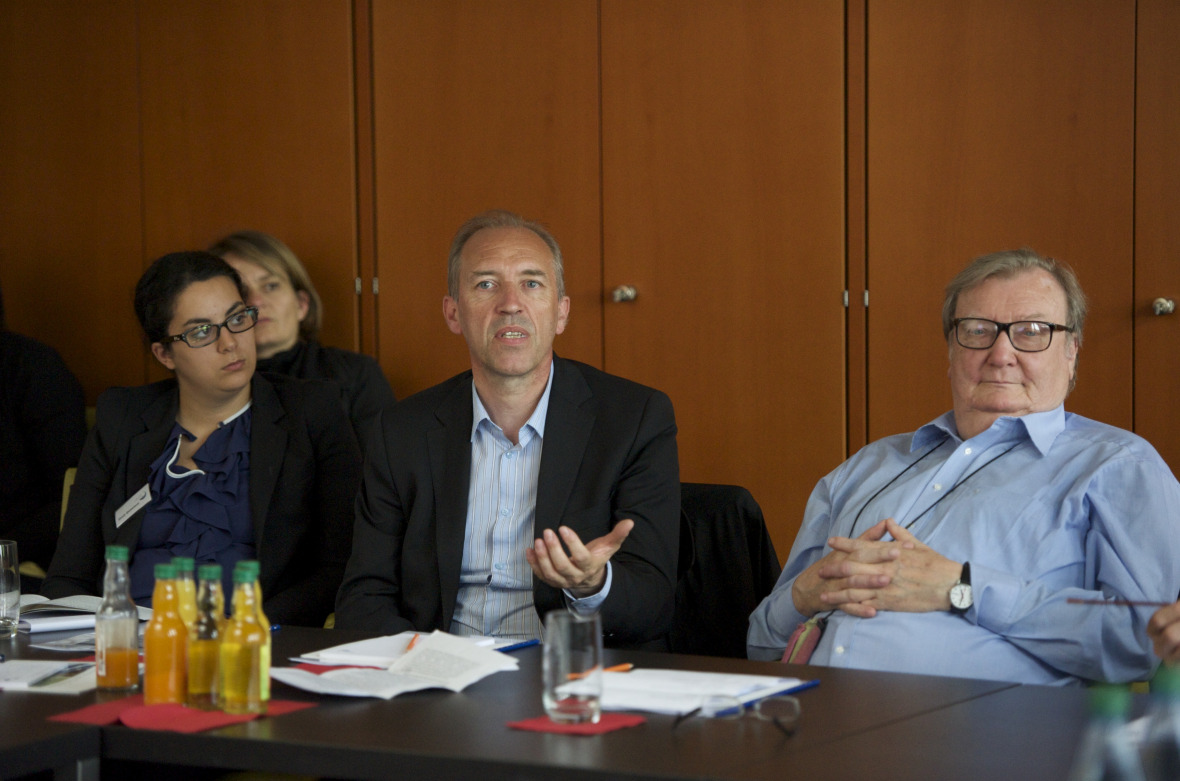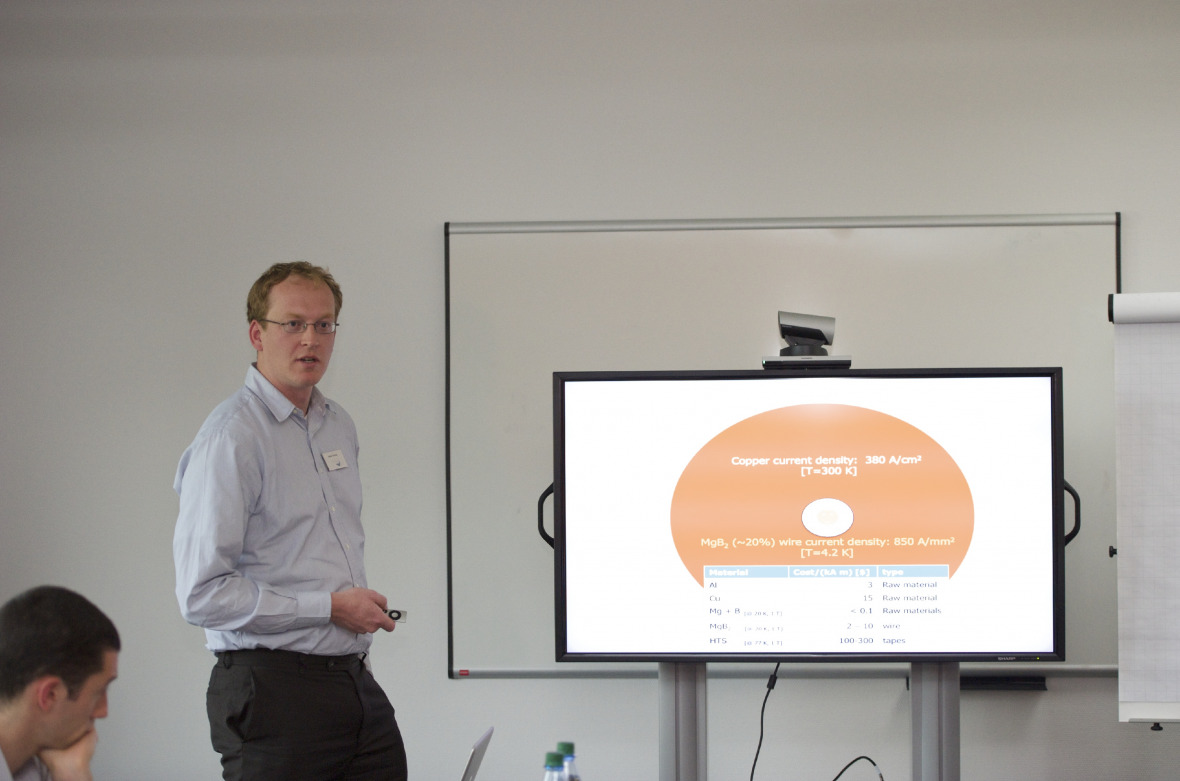Superconducting electric lines: IASS welcomes RTE delegation
02.07.2013

What could be the long-distance electricity transmission technology of the 21st century? This was one of the questions that was discussed on June 27th, 2013, when a delegation from Réseau de Transport d’Électricité (RTE), the French transmission system operator, visited the IASS to exchange ideas and to discuss the latest developments in the IASS research activity “Long-distance energy transport through superconducting electric lines”.

IASS Scientific Director Prof. Carlo Rubbia (right), and Olivier Grabette, R&D and Innovation Director, RTE (middle)
This programme investigates the possibility of replacing standard HVDC lines with DC superconducting cables, which due to their inherent characteristics permit the transport of large amounts of power without ohmic losses. The cable design developed by the IASS in collaboration with CERN is based on magnesium diboride – a relatively cheap and easy to manufacture superconducting material – and is expected to provide substantial benefits in areas ranging from cost to efficiency, environmental footprint and public acceptance.

Dr. Heiko Thomas presents the IASS programme on superconducting lines
The integration of electricity produced by renewable sources to the electricity grid will require large investments in new transmission lines. For instance, as part of the German Energiewende, several thousand kilometres of new lines will have to be built in the coming decades in order to connect remotely located renewable sources to the places where energy is needed.
Similarly, RTE’s strategic objectives include integrating 40% of renewable energy into the system (up from the current 17%) and finding the technological breakthroughs that will shape the electricity grid of the future. In this respect, a broad identity of views was reached amongst the participants regarding the future prospects of superconducting lines.